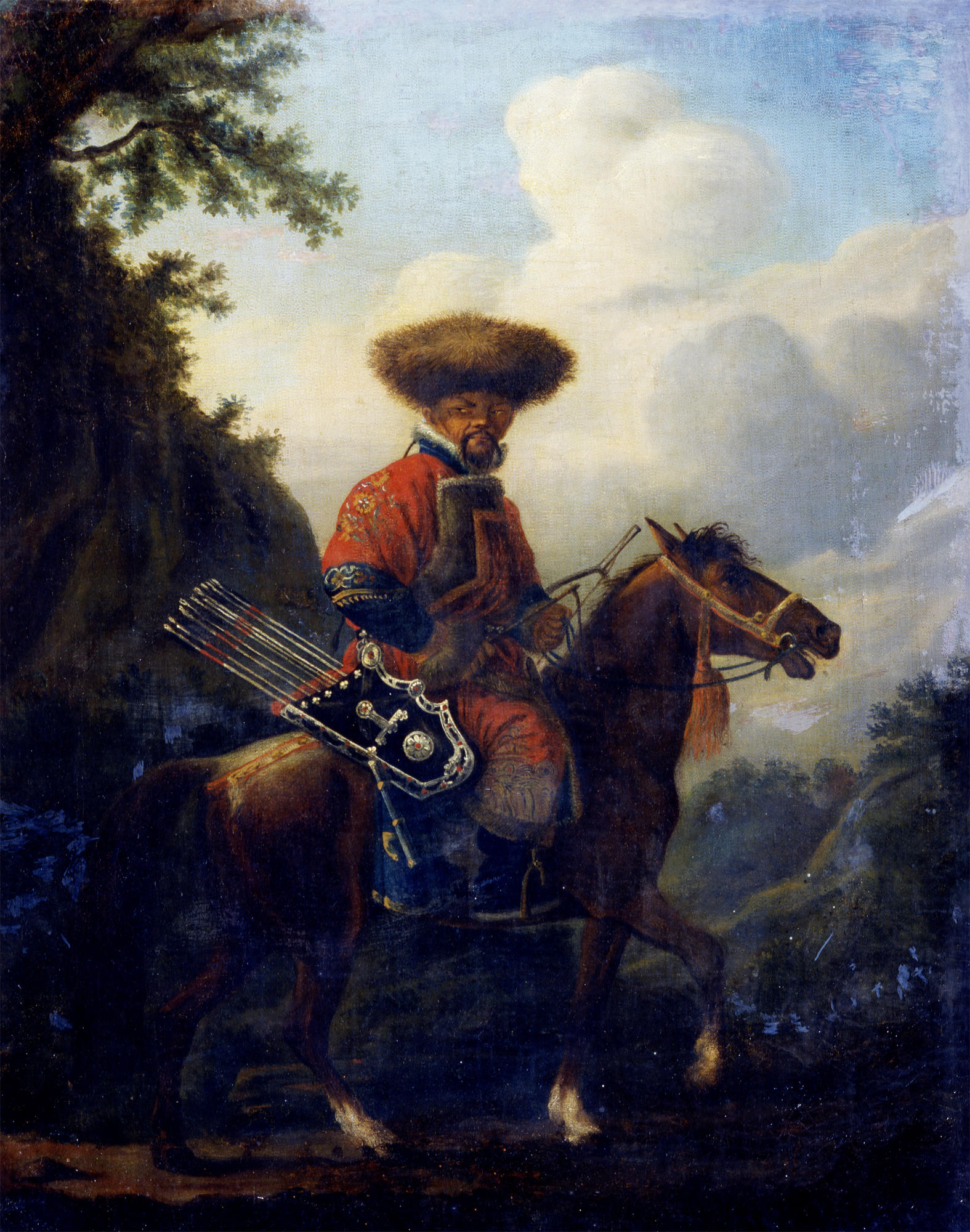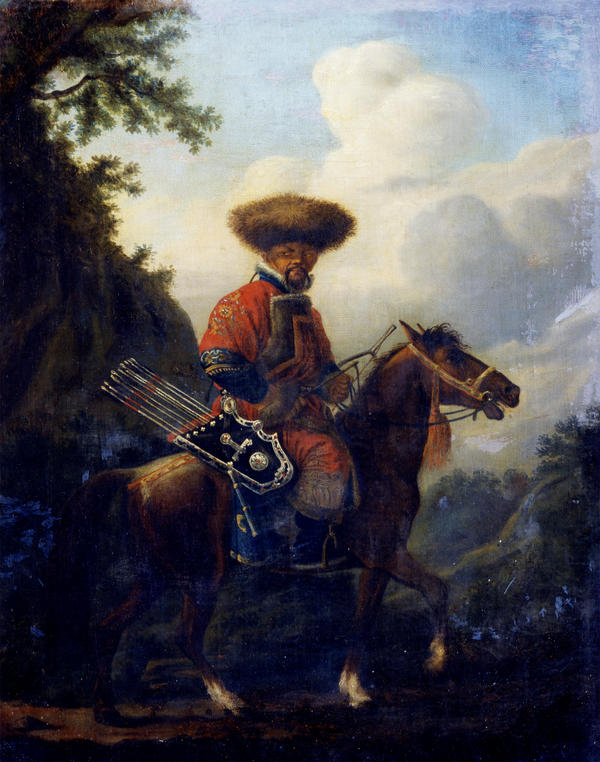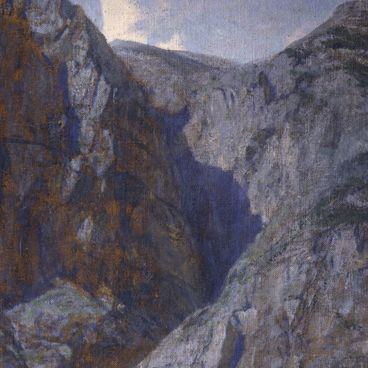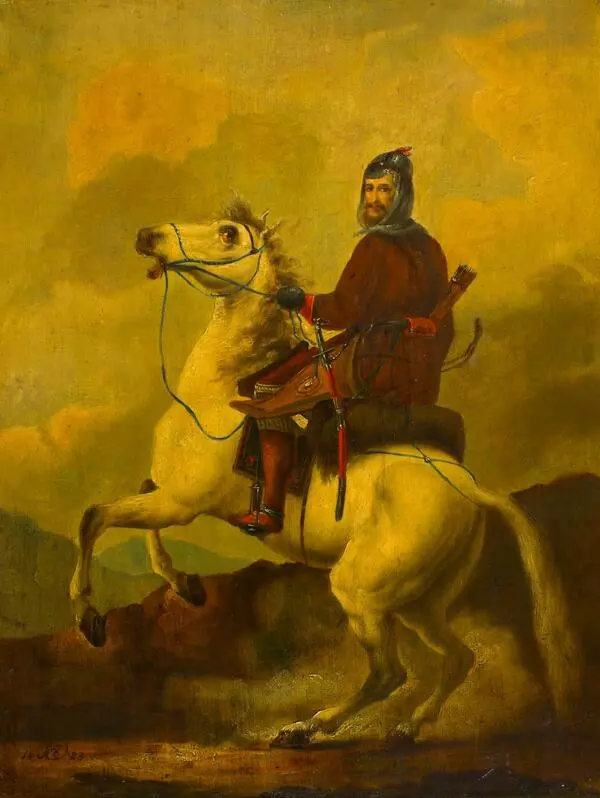Works by Alexander Orlovsky, one of the most romantic artists of his time, are ‘a chronicle of an epoch, both romantic and exciting’ (N. Wrangel). The main themes of his pictures are wild dynamic battles, landscapes at night with a mysterious bonfire light, caracoling horsemen, knights in bright armour, warriors in old-time uniforms, or carriages driven by galloping horses. Romantic poets – Adam Mickiewicz and young Pushkin - dedicated their verses to Orlovsky.
A Kirghiz on Horseback
Creation period
1810s-1820s
Dimensions
55x44 cm
Technique
oil on canvas
Collection
Exhibition
4
Open in app#1
Alexander Orlovsky
A Kirghiz on Horseback
#2
#4
Pushkin wrote in his poem ‘Ruslan and Lyudmila’:
Orlovsky, take your swift crayon
to draw the night’s fierce battle!
#5
Depiction of battle scenes and mounted warriors took a special place in his creative work. In the early 19th century, during the Napoleonic wars, Orlovsky was a court artist for Grand Prince Konstantin Pavlovich and focused on the war theme. Not infrequently did he go to the battle field, bivouac with army squads, and participate in expeditions and marches, always making drawings, sketches and studies.
In 1806, a manifesto was issued calling for conscription of nomads for the time of hostilities (Levee en Masse Manifesto). Orlovsky became one of the first artists who began depicting Bashkirs, Kalmyks and representatives of other ethnic groups of the Urals and the Volga Region. As a true follower of Romanticism, in turning to those images Orlovsky was paying tribute to Orientalism. The exoticism of costumes and armaments of Oriental warriors, bright colours, unusual faces — all those things attracted the artist. The images of oriental horsemen, with all their romantic pointedness, are at the same time very true.
The heyday of the oriental theme in Orlovsky’s art was during the Patriotic War and foreign expeditions of 1812–1814. Ethnic military units had a great role to play in winning the war. ‘Not only the indigenous sons of Russia, but equally so the nomadic peoples, were prepared to die for the Russian land’, - S.N. Glinka, a participant in the 1812 events, wrote.
‘A Kirghiz on Horseback’ could have been painted at that time. At that time, Kirghiz was often a misnomer for Kazakhs whose mounted squads were part of the Russian army but their appearance and armaments were different from what we see in Orlovsky’s painting. Knowing that the artist always took great pains to accurately follow ethnographic details, we will err on the side of the truth suggesting that Orlovsky depicted a Mongolian warrior. Evidence of that is resemblance of the character in A Kirghiz on Horseback to the characters of his other two paintings - Mongolians (1808, Krasnodar Regional Arts Museum), and Mongolian (1808, National Museum, Warsaw).
read morehide
00:00
00:00
1x
A Kirghiz on Horseback
Creation period
1810s-1820s
Dimensions
55x44 cm
Technique
oil on canvas
Collection
Exhibition
4
Open in app
Share







